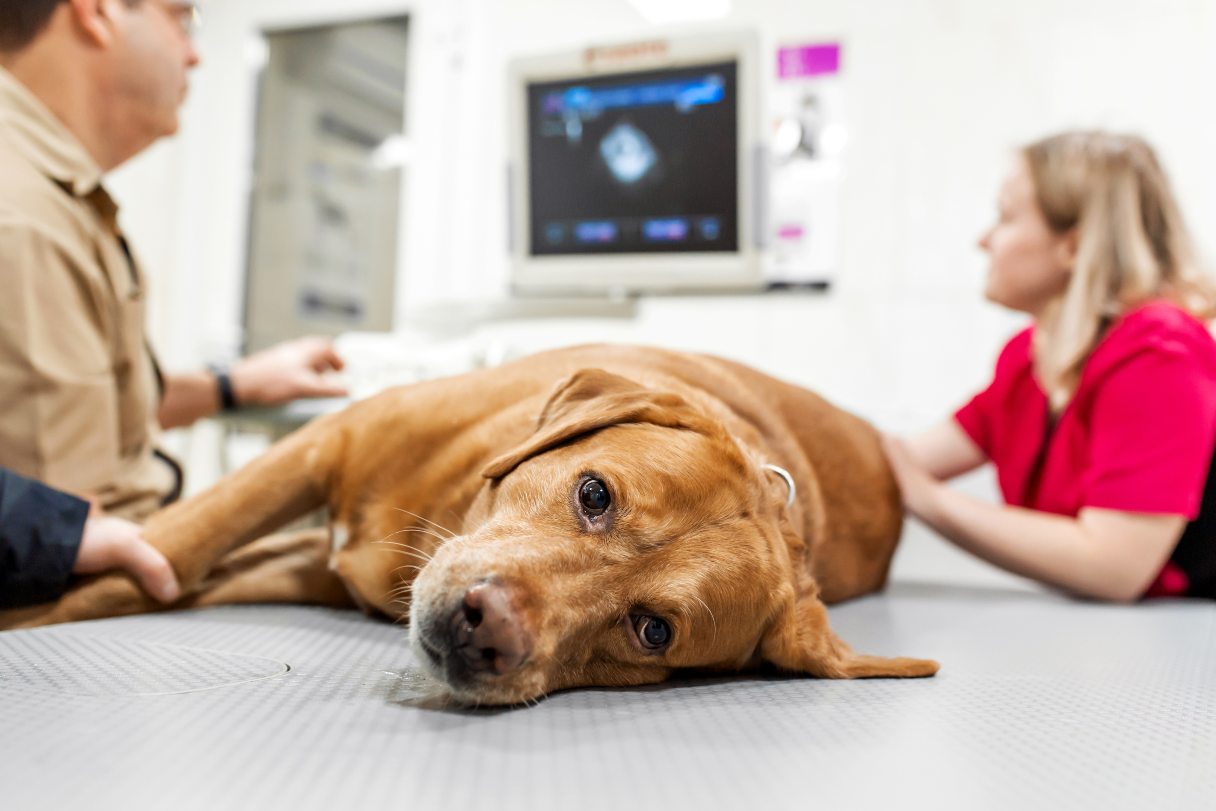Lyme disease is a bacterial illness spread through tick bites.1 It is one of the most common vector-borne diseases affecting dogs.2 In some areas, more than 10% of dogs test positive for exposure to Lyme bacteria (Borrelia burgdorferi).3
Fortunately, most infected dogs recover fully with early detection and appropriate care.2 Here are things to consider about Lyme disease to help protect your pup’s long-term health.
What Is Lyme Disease?
Lyme disease is a potentially fatal infectious disease that can trigger inflammation in the joints, kidneys or other body systems. Dogs become infected when a black-legged tick (i.e., deer tick) carrying the bacteria bites them to feed.1
Not all ticks carry Lyme disease. The condition is most common in certain parts of the country, including the Northeast, Upper Midwest and Pacific Coast.2 Fortunately, most dogs exposed to Borrelia burgdorferi don’t get sick — only 5% to 10% develop Lyme disease symptoms.1
How Dogs Get Lyme Disease
Lyme disease bacteria are transmitted to dogs through tick bites — specifically, Ixodes scapularis ticks in the northeastern and midwestern United States, and Ixodes pacificus on the Pacific Coast. Ticks pick up the bacteria from other animals, then transmit the bacteria to a new host while feeding. Infected ticks must remain attached for at least 24 to 48 hours to transmit Borrelia, which means there’s time to intervene if you find a tick attached to your pet.2
Signs Your Dog May Have Lyme Disease
For the small subset of dogs who develop Lyme disease after exposure to Borrelia bacteria, the illness can present in different ways.
Generalized illness
Unlike humans, dogs don’t usually develop a rash or red “bull's-eye” mark on their skin after infection.2 Instead, dogs in this early stage of illness show nonspecific signs that overlap with many other diseases, including:1
- Fever
- Lethargy
- Swollen lymph nodes
- Reduced appetite
Shifting-leg lameness
A unique symptom that raises suspicion for Lyme disease is shifting leg lameness. Limping and swelling that starts in one leg may quickly shift to another as multiple joints become inflamed.2
Lyme nephritis
In the rare case of Lyme nephritis, symptoms may be attributable to kidney failure.2 Possible signs include:4
- Increased thirst
- Increased urination
- Vomiting
- Weight loss
Lyme nephritis can progress quickly and is often fatal despite treatment. This complication has been reported more frequently in retrievers, indicating these breeds may have a genetic predisposition.5
Discuss Lyme disease complications with your veterinarian and report any changes in your dog’s behavior, appetite or mobility.
Diagnosing Lyme Disease in Dogs
Many veterinarians screen healthy dogs who live in endemic areas for exposure to Lyme bacteria and other common tick-borne diseases with an annual blood test. The same test can also be used if your dog develops Lyme disease signs, such as lameness or fever, to help your vet rule out tick-borne diseases.
Antibody testing
Routine Lyme testing detects antibodies against Borrelia burgdorferi, which form to help fight the infection after exposure.4 Antibodies take several weeks to develop, so the test may not become positive right away.4 Additionally, a positive test result means that your dog has been exposed to the bacteria, but not necessarily that they are actively sick.2
Additional veterinary tests
Thankfully, many dogs that test positive for Lyme bacteria exposure don't need treatment.4 To determine whether treatment is needed, your veterinarian will consider your dog’s overall health, contributing factors and medical history.2 They may also order an additional test to quantify Lyme antibodies in the blood to determine whether your dog has an active infection or if the antibodies are from a previous exposure.2
If your veterinarian has concerns about kidney complications, they may recommend a urine test to look for protein loss or other early signs of kidney damage.4
Helping Your Dog Recover From Lyme Disease
If your veterinarian determines your dog needs treatment for Lyme disease, they’ll usually prescribe a four-week course of antibiotics.2
Medical therapy
Doxycycline is the most commonly prescribed antibiotic for tick-borne infections and begins working quickly to reduce symptoms and clear the bacteria. Additional medications may include anti-inflammatory agents and pain relievers to help alleviate joint discomfort.2
Possible side effects
Doxycycline can cause side effects in some dogs. Common issues include vomiting, diarrhea and loss of appetite, especially when given on an empty stomach. Your veterinarian may recommend giving the antibiotic with food or switching medications if side effects are severe.
Hospitalization
Treatment for Lyme nephritis is more intensive, often requiring hospitalization, intravenous (IV) fluids and medications to support kidney function. Even with aggressive care, this form of Lyme disease can be challenging to treat and may not have a favorable outcome.4
If your dog tests positive or is diagnosed with Lyme disease, look to your veterinary team to support you through your dog’s treatment. They can help answer your questions and explain treatment options every step of the way.
Tips to Protect Your Dog From Lyme Disease
Preventing Lyme disease is often easier than treating it, and starts with avoiding tick bites.
Tick preventives
One of the most effective ways to protect your dog is by using veterinarian-recommended tick preventives year-round, including during the cooler months. Tick control products are available in many forms, including oral medications, topical treatments and collars. Your veterinarian can help you choose the right product based on your dog’s health, lifestyle and exposure level.4
Tick checks
Check your dog for ticks after walking or playing in wooded, grassy or brushy areas.1 Ticks often attach around the head, ears, neck, armpits and between the toes. Removing ticks within 24 hours dramatically reduces the chances of Lyme disease transmission.2
Lyme vaccination
If you live in or travel to a region with a current or potential high exposure or infection rate, your veterinarian may also recommend the Lyme disease vaccine for your dog.5 The vaccine is classified as “noncore,” or optional, meaning it’s recommended for dogs susceptible to the disease, such as those who live in endemic areas or engage in activities like hiking or camping.5 The Lyme vaccine is effective, but doesn’t protect against other tick-borne diseases that can make your dog sick.
Zoonotic potential
While dogs can’t directly spread Lyme disease to people or other pets, they can carry ticks into the home. Practicing tick prevention for your pets helps protect your entire household. Staying on top of tick control, checking your dog regularly and talking with your vet about vaccination can provide you with more worry-free time outdoors.1
When in Doubt, Contact Your Vet
Lyme disease is one of the many health concerns that may affect your dog, but you don’t have to face it alone. Talk to your vet about routine Lyme disease screenings and preventive measures that fit your dog’s lifestyle. Understanding how the disease spreads, what to watch for and how to prevent tick-borne illness empowers you to make informed decisions about your dog’s health and well-being.
Frequently Asked Questions About Lyme Disease
Learning that your dog may be susceptible to Lyme disease can raise many questions. Here are answers to some common pet owner concerns.
CareCredit Credit Card Financing for Dogs
Taking good care of your pet's well-being from nose to tail is essential. Make sure to stay up to date on their regular checkups at the vet to help keep your pet happy and healthy for a lifetime of love. You can use your CareCredit credit card for pet care throughout the year for routine veterinary services as well as emergencies and surgeries.* Use our Acceptance Locator to find a veterinarian near you that accepts CareCredit.
CareCredit is there for you and your pet every step of the way; continue your wellness journey by downloading the CareCredit Mobile App to manage your account, find a provider on the go and easily access the Well U blog for more great articles, podcasts and videos.
In addition to pet care, you can also use your CareCredit credit card for dentistry, cosmetic, vision, hearing, health systems, dermatology, pharmacy purchases, spa treatments and so much more within the CareCredit network. How will you invest in your health and wellness next?
Author Bio
Angela Beal, D.V.M., has more than 20 years of experience as a veterinarian. Leveraging her background in private practice and academia, she uses her passion for writing to convey information to pet owners to help them keep their pets healthy and happy.







